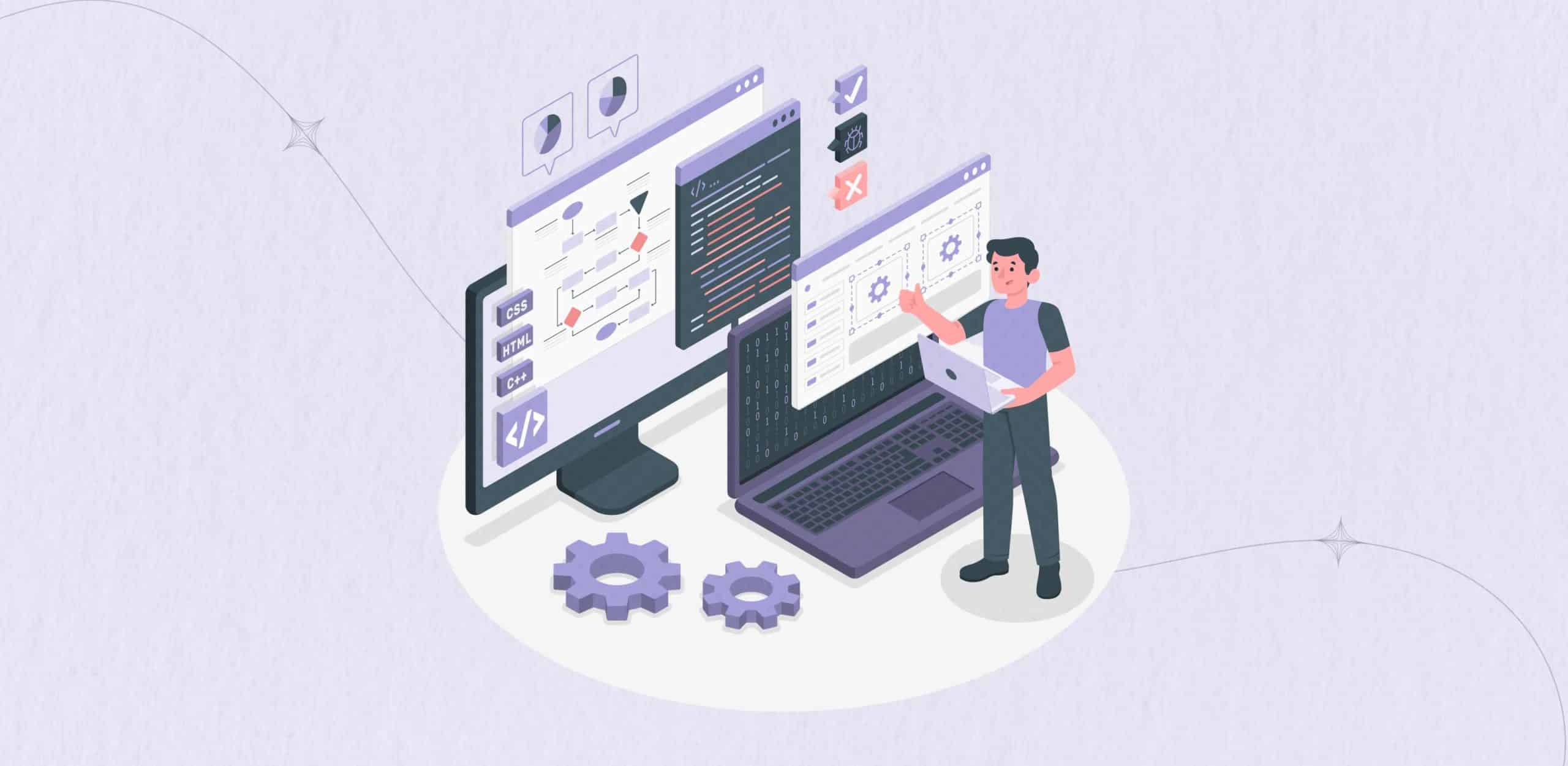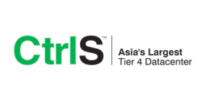Enterprise applications are the backbone of modern businesses, handling vast amounts of sensitive data and enabling critical operations. Ensuring these applications are both secure and scalable is essential to maintaining operational integrity and protecting against security breaches.
According to IBM’s Cost of a Data Breach Report, in 2023, the average cost of a data breach reached an all-time high of $4.45 million. This alarming statistic underscores the critical importance of security in enterprise applications. As enterprises increasingly rely on large-scale applications to drive their operations, the need to safeguard these systems against potential threats becomes paramount.
This blog will delve into the key security considerations for large-scale enterprise applications, covering aspects such as access control, data encryption, secure coding practices, regular security audits, and incident response plans.
Understanding Enterprise Application Development Security
Enterprise application development security involves the processes, tools, and practices designed to protect enterprise software applications from internal and external threats. These applications often integrate with various systems and databases, making them prime targets for cyber-attacks. Security measures must ensure that data remains confidential, integral, and available to authorized users while preventing unauthorized access and breaches.
Get to know how an Enterprise Application Development Company can accelerate your business.
Key Security Challenges
Large-scale enterprise applications face several security challenges that can significantly impact their functionality, performance, and overall security posture. These challenges include complexity, data sensitivity, the evolving threat landscape, and compliance requirements. Understanding these challenges is crucial for developing robust security strategies that protect enterprise applications from potential threats.
- Complexity
The intricate nature of enterprise applications, characterized by their numerous integrations and interdependencies, significantly increases the potential attack surface. Unlike simpler applications, enterprise systems often integrate with various third-party services, databases, and internal subsystems, creating multiple entry points for attackers.- Integration Challenges: Each integration point represents a potential vulnerability. For example, integrating with a third-party API may introduce security risks if the API is not adequately secured. Similarly, data exchanged between systems must be protected to prevent interception or tampering.
- Interdependencies:The interdependent nature of enterprise applications means that a security breach in one component can have a cascading effect on the entire system. A vulnerability in a seemingly minor component can be exploited to gain access to more critical parts of the application.
- Complex Configuration:Enterprise applications often require complex configurations and extensive customization to meet specific business needs. Misconfigurations, such as improper access controls or unpatched software, can create significant security risks.
To address these complexity-related challenges, enterprises must adopt a comprehensive security approach that includes thorough risk assessments, secure integration practices, and continuous monitoring of all components.
- Data Sensitivity
Enterprise applications often handle highly sensitive data, such as financial information, personal data, and proprietary business information. The sensitivity of this data necessitates stringent protection measures to prevent unauthorized access, data breaches, and other security incidents.- Financial Information: Financial data, including transaction records, account details, and payment information, is a prime target for cybercriminals. A breach involving financial data can lead to significant financial losses, fraud, and reputational damage.
- Personal Data: Personal data, such as customer and employee information, must be protected to comply with privacy regulations and maintain trust. Unauthorized access to personal data can result in identity theft, privacy violations, and legal repercussions.
- Proprietary Business Information: Proprietary information, such as trade secrets, intellectual property, and strategic plans, is crucial for maintaining a competitive edge. A security breach that exposes proprietary information can undermine an enterprise’s market position and profitability.
Enterprises must implement robust encryption mechanisms, access controls, and data governance policies to safeguard sensitive data. Regular security audits and vulnerability assessments can help identify and mitigate risks associated with data sensitivity.
- Evolving Threat Landscape
The threat landscape for enterprise applications is continually evolving, with cybercriminals developing new tactics and techniques to exploit vulnerabilities. This dynamic environment requires enterprises to constantly update and monitor their security measures to stay ahead of potential threats.- Advanced Persistent Threats (APTs): APTs are sophisticated, targeted attacks that aim to infiltrate and remain undetected within an enterprise network for extended periods. APTs often involve multiple stages, including reconnaissance, exploitation, and data exfiltration.
- Zero-Day Exploits: Zero-day exploits take advantage of previously unknown vulnerabilities in software or hardware. Because these vulnerabilities are not yet publicly known, they are particularly dangerous and challenging to defend against.
- Ransomware: Ransomware attacks involve encrypting an enterprise’s data and demanding a ransom for its release. These attacks can cause significant operational disruptions and financial losses.
- Phishing and Social Engineering: Phishing and social engineering attacks exploit human vulnerabilities to gain access to enterprise systems. Attackers may impersonate trusted entities or manipulate individuals into revealing sensitive information or performing unauthorized actions.
To counter the evolving threat landscape, enterprises must adopt a proactive security strategy that includes real-time threat intelligence, advanced threat detection tools, and employee training on recognizing and responding to phishing and social engineering attacks.
- Compliance Requirements
Enterprises must comply with various regulations and standards that impose strict security requirements. Compliance is a legal obligation and a critical component of maintaining trust and credibility with customers, partners, and stakeholders.- General Data Protection Regulation (GDPR): GDPR imposes stringent data protection requirements on enterprises that handle the personal data of EU citizens. Compliance involves implementing measures to protect data privacy, ensuring data subject rights, and reporting data breaches within specified timeframes.
- Health Insurance Portability and Accountability Act (HIPAA):HIPAA sets standards for the protection of health information in the United States. Enterprises in the healthcare sector must ensure the confidentiality, integrity, and availability of protected health information (PHI).
- Payment Card Industry Data Security Standard (PCI DSS):PCI DSS establishes security requirements for organizations that handle payment card information. Compliance involves implementing measures to protect cardholder data, such as encryption, access controls, and regular security assessments.
- Other Industry-Specific Regulations: Depending on the industry, enterprises may be subject to additional regulations and standards, such as the Sarbanes-Oxley Act (SOX) for financial reporting or the Federal Information Security Management Act (FISMA) for federal agencies.
Achieving and maintaining compliance requires a comprehensive approach that includes regular audits, documented security policies and procedures, and continuous monitoring of regulatory changes. Enterprises must also ensure that their security measures align with the specific requirements of the regulations they are subject to.
Importance of Security
Security is a top priority for enterprises for several compelling reasons, each underscoring the critical need for robust security measures in enterprise application development- Data Protection
One of the most fundamental reasons for prioritizing security is the protection of sensitive data. Enterprises handle vast amounts of data, including customer information, financial records, intellectual property, and proprietary business data. Unauthorized access to this data can have severe consequences:
- Customer Trust: Customers entrust enterprises with their personal and financial information. A security breach compromising this data can lead to a significant loss of trust. Once trust is lost, it is challenging to regain, and customers may choose to take their business elsewhere.
- Financial Penalties: Regulatory bodies impose strict penalties on enterprises that fail to protect sensitive data. The General Data Protection Regulation (GDPR) in Europe, for example, can levy fines up to 4% of an organization’s annual global turnover or €20 million, whichever is greater, for data breaches.
- Business Continuity
Security breaches can significantly disrupt business operations, leading to substantial downtime and loss of revenue. For large-scale enterprises, the impact can be devastating:
- Operational Disruption: A cyber-attack can disable critical systems, halt business processes, and make it impossible to carry out day-to-day operations. For example, a ransomware attack can lock down essential data and systems until a ransom is paid, crippling the business in the meantime.
- Revenue Loss: Downtime resulting from security incidents can lead to missed opportunities and lost sales. The longer the downtime, the greater the financial impact. Moreover, the costs associated with mitigating the breach and restoring systems can be substantial.
- Reputation Management
An enterprise’s reputation is one of its most valuable assets. A security breach can severely damage this reputation, affecting customer loyalty and market position:
- Customer Loyalty: Customers are less likely to continue doing business with a company that has experienced a significant security breach, especially if their personal data was compromised. This can lead to a decline in customer retention and acquisition rates.
- Market Position: News of a security breach can spread quickly, damaging an enterprise’s brand and credibility. Competitors may seize the opportunity to capture disgruntled customers, further eroding market share.
- Legal and Regulatory Compliance
Enterprises must comply with various legal and regulatory requirements designed to protect sensitive information and ensure data security:
- Regulatory Requirements: Different industries are governed by different regulations. For example, healthcare organizations in the U.S. must comply with the Health Insurance Portability and Accountability Act (HIPAA), which sets standards for protecting sensitive patient information. Similarly, financial institutions must adhere to the Payment Card Industry Data Security Standard (PCI DSS) to secure credit card transactions.
- Legal Consequences: Failure to comply with these regulations can result in hefty fines, legal action, and even criminal charges against the responsible parties. Beyond financial penalties, non-compliance can lead to increased scrutiny from regulatory bodies, further impacting the enterprise’s operations and reputation.
Contact us today to schedule a consultation with our security experts.
Key Security Considerations for Large-Scale Projects
- Access Control
Implementing robust access control mechanisms is fundamental to enterprise application security. Access control ensures that only authorized users can access specific resources and perform certain actions. By limiting access based on predefined criteria, enterprises can significantly reduce the risk of unauthorized access and potential security breaches.- Role-Based Access Control (RBAC)
Role-based access Control (RBAC) is a widely used access control mechanism that assigns permissions to users based on their roles within the organization. Each role has a set of permissions associated with it, and users are granted access rights according to the roles they are assigned. This approach minimizes the risk of unauthorized access by ensuring users have only the access necessary for their job functions. - Multi-Factor Authentication (MFA)
Multi-Factor Authentication (MFA) adds an extra layer of security by requiring users to provide two or more verification factors to access an application. These factors typically include something the user knows (password), something the user has (a mobile device or security token), and something the user is (biometric verification such as fingerprints or facial recognition).
- Role-Based Access Control (RBAC)
- Data Encryption
Encrypting data is essential to protect it from unauthorized access and ensure its integrity. Encryption transforms data into a secure format that can only be accessed by those with the decryption key, making it an effective way to safeguard sensitive information.Data at Rest
Data at rest refers to data stored on physical or virtual disks, databases, and other storage mediums. Encrypting data at rest prevents unauthorized access in case of physical theft or unauthorized access to the storage system. For example, if a laptop containing sensitive information is stolen, encryption ensures that the data remains inaccessible without the decryption key.Enterprises should use strong encryption algorithms and manage encryption keys securely to protect data at rest. Common standards include AES (Advanced Encryption Standard) with 256-bit keys, which provides robust protection against unauthorized access.
Data in Transit
Data in transit refers to data moving across networks, such as during communication between client applications and servers. Encrypting data in transit ensures that it remains secure from interception or tampering during transmission. Protocols such as TLS (Transport Layer Security) are commonly used for this purpose, providing end-to-end encryption and protecting data from eavesdropping and man-in-the-middle attacks.By implementing strong encryption for both data at rest and data in transit, enterprises can ensure comprehensive data protection across all stages of the data lifecycle.
- Secure Coding Practices
Adhering to secure coding practices helps prevent vulnerabilities that attackers could exploit. By following best practices, developers can create enterprise applications that are more resistant to security threats.
- Common Vulnerabilities
Certain vulnerabilities are particularly common targets for attackers, including SQL injection and Cross-Site Scripting (XSS). SQL injection involves inserting malicious SQL queries into input fields, allowing attackers to manipulate the database and access sensitive information. XSS involves injecting malicious scripts into web pages, which can then execute in the browser of any user who views the page, potentially compromising user data. - Prevention Techniques
Developers can mitigate these and other vulnerabilities by following secure coding practices:- Parameterized Queries: Using parameterized queries or prepared statements prevents SQL injection by ensuring that input data is treated as data, not executable code.
- Input Validation: Validating all user inputs to ensure they conform to expected formats and values helps prevent various types of injection attacks.
- Output Encoding: Encoding output data before it is rendered in a web page helps prevent XSS by ensuring that any embedded scripts are treated as data rather than executable code.
- Secure Libraries: Using secure libraries and frameworks that have been tested and reviewed for security issues can help prevent the introduction of vulnerabilities.
- Common Vulnerabilities
- Regular Security Audits
Regular security audits and vulnerability assessments are crucial for identifying and mitigating potential security risks. Audits help ensure that security measures are effective and up to date, providing an opportunity to address any weaknesses before they can be exploited.Internal and External Audits
Internal audits involve assessing the security measures within the organization, conducted by in-house security teams. These audits provide insights into the current state of security and help identify areas for improvement.External audits, on the other hand, involve evaluations by third-party organizations. These audits provide an unbiased perspective and can identify issues that internal teams might overlook. External audits are often required for regulatory compliance, adding an extra layer of credibility to the security assessment.
- Automated Tools
Automated security tools can help identify vulnerabilities and compliance issues, providing continuous monitoring and rapid detection of security threats. Tools such as static application security testing (SAST) and dynamic application security testing (DAST) can automatically scan code and applications for potential vulnerabilities, allowing developers to address issues promptly.
- Incident Response Plan
Having a comprehensive incident response plan is vital for minimizing the impact of security breaches. An effective incident response plan ensures that the organization can quickly and effectively respond to security incidents, minimizing damage and recovery time.- Key Elements
An effective incident response plan should include:- Detection: Procedures for detecting security incidents, including monitoring tools and alert systems.
- Response: Clear steps for responding to incidents, including containment, eradication, and recovery procedures.
- Roles and Responsibilities: Defined roles and responsibilities for the incident response team, ensuring a coordinated and efficient response.
- Communication Protocols: Guidelines for communicating with stakeholders, including internal teams, customers, and regulatory bodies.
- Post-Incident Analysis: Procedures for analyzing incidents after they have been resolved, identifying root causes, and implementing measures to prevent future occurrences.
- Importance
A well-prepared incident response plan ensures that the enterprise can quickly and effectively respond to security incidents, minimizing damage and recovery time. By having clear procedures in place, organizations can reduce the chaos and confusion that often accompany security breaches, ensuring a swift and coordinated response.
- Key Elements
Scalability Considerations for Enterprise Applications
Scalability vs. Security
Balancing scalability and security is a critical aspect of enterprise application development. Ensuring that security measures do not hinder the application’s ability to scale as the business grows is paramount.
- Balancing Act
Robust security measures are essential for protecting enterprise applications from threats and breaches. However, these measures should be designed to handle increased loads and user demands without compromising performance. Here are a few strategies to achieve this balance:- Minimize Overhead: Security features like encryption, authentication, and logging can introduce performance overhead. Implementing these features efficiently, such as using hardware acceleration for encryption or asynchronous logging, can reduce their impact on performance.
- Load Distribution: Distributing security processing across multiple servers or services can prevent bottlenecks. For example, using a separate authentication service that scales independently of the application can help manage the load.
- Elastic Resources: Leveraging cloud infrastructure that automatically scales resources in response to traffic changes can help maintain both security and performance. Cloud providers offer services that can automatically adjust resources based on current demands, ensuring that security processes are always adequately resourced.
- Strategic Planning
Implementing scalable security solutions, such as cloud-based security services, can help achieve the balance between scalability and security. Here are some key considerations:- Cloud Security Services: Cloud providers offer a range of security services, including managed firewalls, DDoS protection, and identity and access management (IAM). These services are designed to scale automatically, providing robust security without compromising performance.
- Security as Code: Treating security configurations and policies as code allows for automated deployment and scaling. Infrastructure as Code (IaC) tools like Terraform and AWS CloudFormation enable consistent and repeatable security configurations that scale with the infrastructure.
- Continuous Integration and Continuous Deployment (CI/CD): Integrating security checks into the CI/CD pipeline ensures that security measures scale alongside the application. Automated testing and deployment pipelines can include security scans and compliance checks, allowing for rapid and secure deployments.
Architecture Design
Designing a scalable architecture is fundamental to building secure and scalable enterprise applications. The right architecture ensures that the application can grow and adapt to increased user demands while maintaining robust security.
- Microservices
Microservices architecture divides an application into smaller, independent services that can be developed, deployed, and scaled independently. This approach enhances scalability and fault isolation while improving overall security.- Service Isolation: Each microservice runs in its own environment, reducing the risk of a security breach in one service affecting others. This isolation helps contain security incidents and simplifies the management of security policies.
- Independent Scaling: Microservices can be scaled independently based on demand. For instance, a payment processing service can scale independently of a user authentication service, ensuring that each service has the resources it needs without over-provisioning.
- Enhanced Security: Microservices can use different security measures tailored to their specific needs. For example, a service handling sensitive data might implement stricter access controls and encryption protocols compared to a service serving static content.
- Cloud-Native
Cloud-native architectures leverage cloud services to achieve scalability and resilience. Cloud providers offer a range of security tools and services that can be integrated into the application to enhance security.- Managed Services: Using managed services like AWS Lambda, Azure Functions, and Google Cloud Functions can offload infrastructure management and security concerns to the cloud provider. These services come with built-in security features and automatically scale with demand.
- Containerization: Containers encapsulate application components and their dependencies, providing consistent environments across development, testing, and production. Tools like Kubernetes orchestrate container deployment and scaling, ensuring that security policies are consistently applied across all instances.
- Serverless Security: Serverless architectures abstract away the underlying infrastructure, allowing developers to focus on code. Security responsibilities, such as patch management and network security, are handled by the cloud provider, reducing the operational burden.
- Performance Monitoring
Continuous performance monitoring is essential for maintaining the scalability and security of enterprise applications. Monitoring tools provide real-time insights into application performance, identifying potential bottlenecks and security vulnerabilities.- Monitoring Tools
Tools such as application performance monitoring (APM) solutions can provide real-time insights into application performance. These tools help identify potential bottlenecks and security vulnerabilities, ensuring that the application remains performant and secure.- Real-Time Analytics: APM tools like New Relic, Dynatrace, and AppDynamics offer real-time analytics, allowing teams to monitor application performance and detect anomalies quickly.
- Alerting and Reporting: These tools can be configured to send alerts when performance metrics exceed predefined thresholds. For example, an unusual spike in CPU usage or network traffic might indicate a security incident, prompting an immediate investigation.
- Integration with Security Tools: Integrating APM tools with security information and event management (SIEM) systems can provide a comprehensive view of both performance and security, enabling quicker detection and response to incidents.
- Improvement Techniques
Regularly analyzing performance data and implementing optimization techniques can improve both scalability and security.- Load Balancing: Distributing traffic across multiple servers or services prevents any single component from becoming a bottleneck. Load balancers can also be configured to detect and mitigate certain types of attacks, such as DDoS.
- Caching: Implementing caching strategies reduces the load on backend systems by serving frequently requested data from the cache. This not only improves performance but also reduces the attack surface by limiting direct access to sensitive data.
- Optimization: Regularly reviewing and optimizing code and database queries can enhance performance and reduce resource consumption. This includes optimizing algorithms, indexing databases, and refactoring code to improve efficiency.
- Monitoring Tools
Conclusion
Prioritizing security in enterprise application development is essential to protect sensitive data, ensure business continuity, and maintain regulatory compliance. By implementing the strategies discussed, enterprises can build applications that are both secure and scalable, capable of supporting their growth and operational needs.
Partnering with an experienced enterprise application development company can provide the expertise and resources needed to implement these best practices effectively. Secure your applications today and ensure a robust and scalable future for your enterprise.
Let’s transform your business for a change that matters!
F. A. Q.
Do you have additional questions?
What is enterprise application security?
Enterprise application security involves protecting enterprise-level applications from cyber threats by implementing measures to ensure data confidentiality, integrity, and availability.
Why is security important for large-scale enterprise applications?
Security is crucial for protecting sensitive data, ensuring business continuity, maintaining customer trust, and complying with legal and regulatory requirements. A breach can have severe financial and reputational consequences.
What are the common security challenges faced by large-scale enterprise applications?
Common challenges include managing complexity, protecting sensitive data, adapting to an evolving threat landscape, and complying with stringent regulatory requirements.
What are some key security considerations for large-scale projects?
Key considerations include implementing robust access control, encrypting data at rest and in transit, following secure coding practices, conducting regular security audits, and having a comprehensive incident response plan.
How does access control enhance enterprise application security?
Access control ensures that only authorized users can access specific resources and perform certain actions, minimizing the risk of unauthorized access and potential breaches.
What is the role of data encryption in securing enterprise applications?
Data encryption protects data by converting it into a secure format that can only be read by authorized parties, thus safeguarding it from unauthorized access during storage and transmission.
What are secure coding practices, and why are they important?
Secure coding practices involve writing code in a way that prevents common vulnerabilities like SQL injection and cross-site scripting (XSS). These practices are crucial for preventing attacks that exploit application vulnerabilities.
Why are regular security audits necessary for enterprise applications?
Regular security audits help identify and mitigate potential security risks, ensuring that security measures are up-to-date and effective in protecting against emerging threats.
What is the significance of having an incident response plan?
An incident response plan outlines procedures for detecting, responding to, and recovering from security incidents. It helps minimize damage, ensure quick recovery, and improve future security measures.
How can enterprises balance scalability and security in application development?
Balancing scalability and security involves designing security measures that do not hinder performance, leveraging cloud-based security services, implementing scalable architectures like microservices, and continuously monitoring application performance.



















